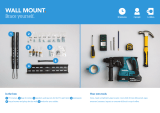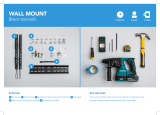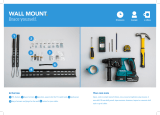
2
Table of Cont ents
Safety and warning information ........................... 3
Installation Possibilities ........................................ 4
Stand alone appliance ............................................ 4
Side-by-Side set up ................................................ 4
Stand alone appliance with dividing wall ................. 4
As an end section to a row of kitchen units ............. 4
Moving the appliance
to the installation position .................................... 5
Installation location ................................................. 5
Atmosphere grades ................................................ 5
Installation niche ..................................................... 5
Neighbouring kitchen furniture ................................ 5
Subsurface ............................................................. 5
Electrical connection ............................................... 6
Water connection ................................................... 6
Dimensions of the installation niche .................... 7
Setting-up as an stand alone appliance .................. 7
Side-by-Side set up ................................................ 8
Location of the water connection ............................ 9
Dimensions of the Appliances ............................. 10
45.1 cm appliances – freezers with/without
water and ice dispens ............................................. 10
45.1 cm appliances – wine storage cabinet ............ 11
60.3 cm appliances – refrigerators and freezers
with/without water and ice dispens ......................... 12
60.3 cm appliances – wine storage cabinet ............ 13
75.6 cm appliances – refrigerators
and freezers ............................................................ 14
Tools and accessories which are needed ........... 15
Scope of delivery .................................................... 15
Additional accessories ............................................ 15
Tools ...................................................................... 15
Miscellaneous ......................................................... 15
Installation instructions ........................................ 16
1. Check the installation niche ............... 16
2. Transporting the appliance ................ 16
3. Removing the packaging ................... 17
4. Installation preparation ...................... 17
5. Changing over the door hinges .......... 17
6. Attaching the anti-tipping brackets
to the wall ......................................... 20
7. Alternative anti-tipping device ............ 21
8. Preparing the water connection ......... 22
9. Attaching the edge protectors ........... 22
10. Side-by-Side set up ........................... 22
11. Sliding the appliance into
the installation niche .......................... 23
12. Adjusting the appliance in the niche ... 24
13. Fastening the appliance
to the niche ceiling ............................. 25
14. Fastening the appliance to the side
wall of the installation niche ............... 25
15. Checking that the finger guard
moves easily ...................................... 26
16. Connecting the appliance
to the water supply ............................ 26
17. Fastening the plinth strip .................... 27
18. Switching the appliance on ................ 28
19. Preparing the furniture doors ............. 28
20. Loading the appliance door ............... 29
21. Fastening the adjusting rib
to the furniture door ........................... 30
22. Hanging and aligning
the furniture door ............................... 31
23. Mounting the furniture door ............... 32
24. Screwing on the lower
fixing brackets ................................... 33
25. Fastening the finger protector ............ 34
26. Attaching the covers .......................... 34
27. Adjusting the ice and
water dispenser ................................. 35
28. Attaching covering strips ................... 37
29. Mounting the air filter ......................... 38
30. Setting the door opening angle .......... 38
31. Tensioning the hinge springs ............. 38






















